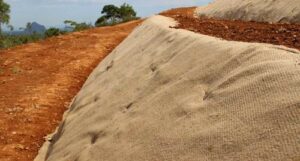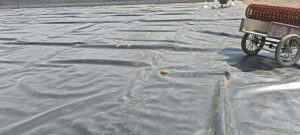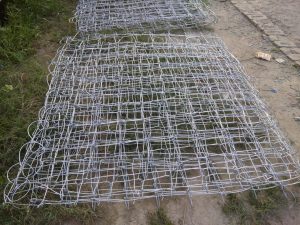Geomembranes, the multipurpose Geosynthetics
What are geomembranes?
In straightforward terms, geo signifies earth while the membrane is a layer. So, geomembrane is essentially an impermeable layer used for separation. It is a geosynthetic liner. Far more effective than traditional concrete, compacted clay, or asphalt, the economical geomembranes are the norm today in a broad array of industries.
The most common types of geomembranes are:
- High-density polyethylene or HDPE Geomembrane sheets
- Low-density polyethylene or LDPE Geomembrane
- Ethylene propylene diene monomer or EPDM Geomembrane
Raw material and technology insights:
HDPE accounts for more than 30% of the global geomembrane market owing to cost-effectiveness, ease of installation, and good thermal stability. The other common engineering polymers like PVC and EPDM are now seeing an increase in use as they are less prone to stress cracking and have low puncture resistance.
Calendaring and extrusion technology helps produce geomembranes of custom thickness, shape, and texture to suit a wide variety of applications. The physical properties of thickness, density, melt flow index, and mass per unit area and mechanical properties of tensile strength, tear resistance, puncture resistance, interface shear strength, stress cracking under constant load, etc., determine their applications.
Insight on Geomembrane Applications:
Designed to resist degradation from UV rays, oxidation, extreme temperatures, and chemically inert, geomembranes are strong and flexible.
Here are some of the more common applications in construction, transport, environmental, and hydraulic fields:
- Landfills: Ideal for use in landfill caps, temporary closures, covers, and landfill liners, the geomembranes effortlessly accommodate these applications given its high elongation and durability. They effectively contain low-hazard industrial waste, solid waste, are deployed as coal ash basin closures, cement kiln ash, and even demolition waste and debris in the construction fields.
- As Caps and Closures: As caps and covers, they help with odor control, prevent water infiltration, provide erosion protection on slopes, and as stockpile covers.
- Pond Liners: The tough and flexible geomembranes with high resistance are very durable as pond liners. Safe for all forms of aquatic life (fish and plants), they are cost-effective and have a good lifespan.
- Mining: Another common application of the HDPE membranes is in the mining industry, preventing leachate leaks as well as providing drainage solutions and preventing soil contamination.
- Canal Liners: The PVC, HDPE, LDPE, and EPDM geomembranes are also extensively deployed as canal liners.
- Oil and Gas Containment: For this purpose, the geomembranes are fabricated with a single-sided or double-sided textured surface to improve the friction coefficient.
- Other Uses: As insulation on floors, waterproofing in tunnels and pipelines, on sports grounds, waterproofing of asphalt floors, in wine culture, etc.
Future of Geomembranes, Industry Insights:
The BisReport analysts believe that in the next few years, the global Geomembrane market size will expand and reach USD 2650 million by 2024. The key factors driving this growth are increasing mining and construction industries and waste management system requirements worldwide. The multipurpose uses of geomembranes make them incredibly versatile and widely used in various industries.
Conclusion:
As an impermeable barrier, geomembrane use is vital for the containment of liquids and gases and have extensive use at municipal landfills, power plants, and mining sites.
At Ocean Geosynthetics, a leading manufacturer of geosynthetics empowered with the latest technology, we provide a site-specific custom approach to all our clients. Our recommendations are on the basis of the on-site physical and chemical factors and installation techniques that directly affect the performance and lifespan of the geomembranes.
Get a Free Quote: Contact Ocean Geosynthetics for geomembranes that are durable, have high endurance, are flexible, have high chemical resistance, and are at the same time economical and environment-friendly.
FAQs
What is the difference between a geomembrane and a geotextile?
A geomembrane is a impermeable liner used to control fluid migration, while a geotextile is a permeable fabric used for separation, filtration, reinforcement, or drainage purposes.
Can geomembranes be used for tank lining applications?
Yes, geomembranes can be used for tank lining applications to provide corrosion resistance, chemical containment, or waterproofing.
What is the role of geomembranes in wastewater treatment facilities?
Geomembranes are used in wastewater treatment facilities for applications such as lining ponds, tanks, or lagoons, and creating containment barriers to prevent the migration of contaminants.



